General Rules
& Regulations
Fair play and safety first! SANESA's rules maintain a level field,
prioritizing horse welfare and sportsmanship.
Join us in riding responsibly.

DRESSAGE
"If training has not made a horse more beautiful, nobler in carriage, more attentive in his behaviour, revealing pleasure in his own accomplishment ... then he has not truly been schooled in dressage." (Col. Handler – Spanish Riding School) Quite simply, dressage means "training" or "preparation". As described by the FEI: "Dressage, the highest expression of horse training, is considered the art of equestrian sport and is used as the groundwork for all the other disciplines."
In modern day dressage competition, the horse and rider perform a test for a number of judges (up to five) to reflect the horse's way of going and level of schooling. Competitions are ridden in a flat arena usually measuring 60m x 20m and surrounded by a low barrier behind which 12 lettered markers are placed from where specified movements start and end. Each movement is awarded a mark out of 10, & some more difficult movements have a coefficient x2, the scores are totalled and shown as a percentage. It is the aim of the competitors to produce a harmonious, elegant performance where the horse moves rhythmically with suppleness in a calm, confident way. "If one induces the horse to assume that carriage, which it would adopt of its own accord when displaying its beauty, then one directs the horse to appear joyous and magnificent, proud and remarkable for having been ridden." (Xenophon - 430 – 354 BC).
The discipline of Dressage is overseen by DRESSAGE SOUTH AFRICA (DSA) and also a member of the SAEF (South African Equestrian Federation)
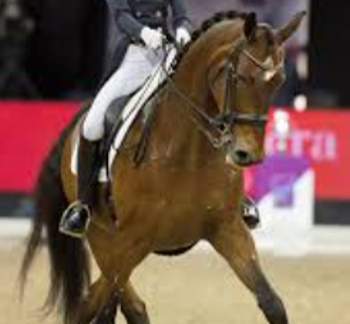
DRESSAGE FREESTYLE
Freestyle to Music, sometimes known as Musical Kur or simply kur (from German kür, "freestyle") is a form of dressage competition where the horses paces are set to music to create a competitive "dance".
Movements and figures are choreographed to meet the technical requirements of the particular level with carefully chosen music that highlights the horse/rider combination. Musical Freestyles are entertaining and offer great audience appeal.
The discipline of Dressage Freestyle is overseen by DRESSAGE SOUTH AFRICA (DSA) and also a member of the SAEF (South African Equestrian Federation).
DRESSAGE FREESTYLE SCORING: please click this link
DSA WEBSITE: please click this link
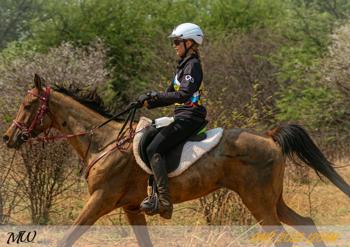
ENDURANCE
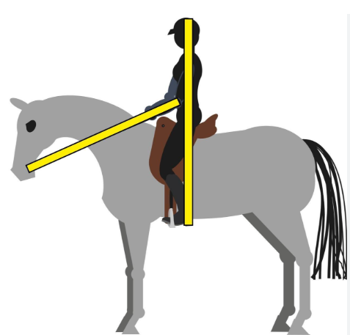
EQUITATION
Equitation – the art and practice of horse riding (Concise
Oxford Dictionary)
Introduced
into SA in 1970 by Mrs Charlotte Stubbs after a visit to the USA and in
consultation with Mr George Morris, American coach and Olympic rider; the
goal of equitation has always been to educate, set a standard of correct
horsemanship nationally and to give exposure at a grass roots level to as many
instructors and young riders as possible.
The most important thing about equitation is that
you don't need a pony or horse that excels at jumping or dressage!
Equitation
remains committed to GOOD RIDING. You, the rider are judged and when you ride
well, your mount performs better and you are doubly rewarded with a good
performance for your effective riding ability.
The
challenge for any young and upcoming rider is –"to go as far as your
talent will allow, without having a wonderfully talented horse or pony"
If
you lease a pony from the local riding school or have a pony at home, you can
enjoy the challenge and pleasure of learning to ride him/her properly, and from
the comments on your score sheet, improve on your faults and gain confidence
when you are rewarded for good riding.
Once
you are able to ride more correctly and effectively, you will be able to
improve your horse's schooling, he or she will perform better and your marks
will reflect this.
An
Equitation horse or pony can be any well schooled mount. It doesn't have to be
as beautiful as a show horse neither is it required to have excellent movement,
or the strength of a Jumper. It may be a horse or pony of any breed and size.
The
tests consist of technical difficulties on the flat and over fences, and aims
to reward the rider who has developed the correct seat and is able to ride
effectively, so as to improve the horse's way of going. The flatwork movements
are intended to reward the rider who is able to sit correctly and with feel, be
effective in riding the horse in the correct frame so that the movements are
ridden with accuracy, impulsion and submission.
The
jumping phase is at a level that suits the average horse or pony, and the
ability of the rider to partner his or her mount effectively and accurately
around the course.
'Maximum effect with minimum visible effort'
Equitation
strives also to guide, encourage and educate the rider who has yet to establish
his or her position and feel.
Equitation
competitions are structured so that every competitor will receive a free
critique from knowledgeable judges-especially valuable to young riders in
outlying areas who may seldom have the benefit of expert tuition.
Those
talented riders who are lucky enough to have a talented mount may go on to
compete in the higher graded classes, but riders and mounts at all levels will
ride and perform better if they have the correct foundation.
Once
a rider has moved through the levels and begins to compete in the Open
equitation classes, any one of our top coaches (and we have many) will carry
that rider forward and with self motivation, and dedication, riders are able to
qualify for provincial colours.
Once
established in the correct techniques of effective riding, our leading juniors,
all of whom have expert instructors who believe in and practice this correct
standard of horsemanship, will be well equipped to move up into the top levels
of Show jumping and other equestrian disciplines.
The discipline of Equitation is overseen by EQUITATION SOUTH AFRICA (SAEQA) and is a member of the SAEF (South African Equestrian Federation).
EQUITATION MOVEMENTS: please click this linkSAEQA WEBSITE: please click this link
MEMORANDUM OF UNDERSTANDING BETWEEN SAEQA AND SANESA: please click this link DISCIPLINE SPECIFICS

EVENTING 3 Phase
,EVENTING 3 PHASE (EV)

JUMPING
Jumping (previously called Show Jumping) is
competitive precision riding over a set course of obstacles, which although
perhaps solid in appearance, are easily knocked down. Each knock or refusal
incurs penalties, which are marked against the competitor. The winner is the
rider who can jump the course clear, and then jump at least part of it again,
raised and this time against the clock, to be clear and faster than any other
rider.
Jumping is a sport that caters for young and old, where boys
and girls, and men and women compete against each other.
The DISCIPLINES OF JUMPING falls under the SAEF (South
African Equestrian Federation). - JUMPING is also a FEI (Federation
Equestré Internationale) discipline.
SASJ WEBSITE: please click this link
DISCIPLINE SPECIFICS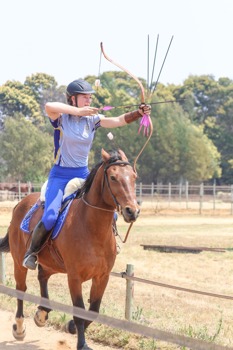
MOUNTED ARCHERY

SADDLE SEAT

SANESA PRIX CAPRILLI
Prix Caprilli, is named after the great Italian rider who was the father of the modern forward seat for jumping, is a dressage test with jumps included.
The tests have the same movements as a dressage test and include the requirement for horse and rider to trot and/or canter over single jumps. Prix Caprilli draws from both disciplines, requiring the horse to perform dressage movements while also navigating low fences. The judges will judge this test the same as a normal dressage test that includes technical marks for the movement, impulsion, submission and riding.
The test takes place in a standard dressage arena, which provides a defined space for the movements. The jumping elements consist of low fences, typically 2' cross rails, to ensure the focus remains on the horse's overall ability and not just on the jumps themselves.
The emphasis is not the jumping style of the horse, it is on
the horse’s relaxation, obedience and evenness of pace. It is a
dressage test that happens to have jumps in the way and the jumps should not
disrupt the standard performance expected in a dressage test. It is
worth thinking about the riding style you will adopt over the jumps as you will
need to establish a position over the jumps that assists the horse in freely
jumping over the jump without any resistance.
The discipline of SANESA Prix Caprilli does not fall under the SAEF and is managed by SANESA.
SANESA PRIX CAPRILLI GUIDELINES: please click this link
DISCIPLINE SPECIFICS
SHOWING (Performance Riding/Working Riding/Working Hunter/In-Hand Utility)
Showing as an equestrian discipline strives to exhibit the
most nearly perfect example of a particular type or breed of horse. Competitors
must be skilled in the training and presentation of the horse as an athlete.
When showing a horse, the rider has to perfect that art of riding the horse to
show it off to its best advantage. The horse’s movement, ability and
manners, are all taken into consideration in the show ring, and only
in the highest level will conformation be judged.
SANESA offers the following classes in the discipline of
Showing:
- The Show
Riding Horse does not require the elegance of the hack or the
substance of the Hunter but should be a lovely easy ride with solid
confirmation. In the lower levels this class is knows
as Performance Riding.
- The Working
Hunter is required to jump a course of fences, have a good gallop
and have the stamina to last a hard day’s hunting.
- The Working
Riding Horse should be obedient enough to perform various tasks
with a good attitude and temperament.
- The In-Hand
Utility Test where competitors will be required to do a utility
type tests in hand. They will lead their horse/pony trhough, round
and over a series of obsticles.
Showing provides the rider with excellent grounding in
horsemanship and ring craft.
The discipline of Showing is overseen by the SHOWING
ASSOCIATION OF SOUTH AFRICA (SASA) and is a member of the SAEF (South African
Equestrian Federation).
DISCIPLINE SPECIFIC RULES AND REGS
Performance Riding: please click this link
Working Riding: please click this link
Working Hunter: please click this link
In-Hand Utility: please click this link
SHOWING GUIDANCE
Showing Handbook: please click this link
Working Hunter Video: please click this link
In-Hand Utility Video: please click
this link
Working Riding Video: please click
this link
Performance Riding Video: please click
this link
SASA WEBSITE: please
click this link
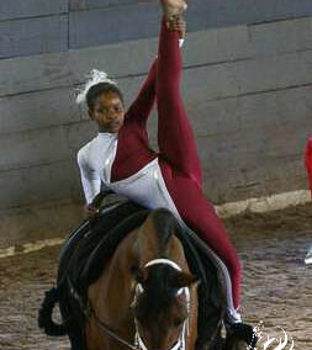
VAULTING

WESTERN MOUNTED GAMES
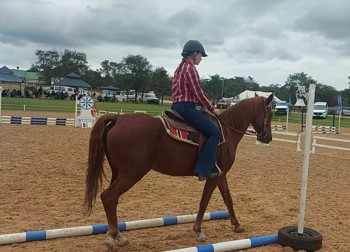
WORKING EQUITATION
Working Equitation was created with
the objective of enhancing the equestrian techniques developed in countries
whose riders use horses in different aspects of fieldwork. Working Equitation
therefore provides an occasion for the simultaneous comparison of sporting and
cultural considerations.
Working Equitation broadens a horses
scope and teaches your horse to be a good partner in any equine sport you care
to pursue. The obstacle course is not only fun, but it hones your aids. For
instance, you learn the basics of bending, leg yields, transitions, side
passing and in higher levels doing flying changes around the poles and giving
your horse a visual reference for timing and purpose of change.
The rider must enjoy a challenge and
be open to trying different things, the horse is trained to have a good mind
and a willing attitude and become balanced. At higher levels, riders need the
ability to lighten the forehand and achieve true collection.
A competent WE rider is always in
balance with his horse, giving the impression of a harmonious cooperation, by
maintaining a correct position, with a commanding but relaxed presence, the
rider appears able to direct the horse with nearly invisible aids.
In WE you don’t have to abandon
everything you know and start at the bottom, you bring your horse (No specific
breed required) and tack and training you already have and simply add another
layer of your expertise.
The sport tests the horse and riders
partnership and ability to manoeuvre obstacles.
South African
Working Equitation Association (ZAWE) is the National Association overseeing the
Technical Discipline Rules for Working
Equitation offered in SANESA.



